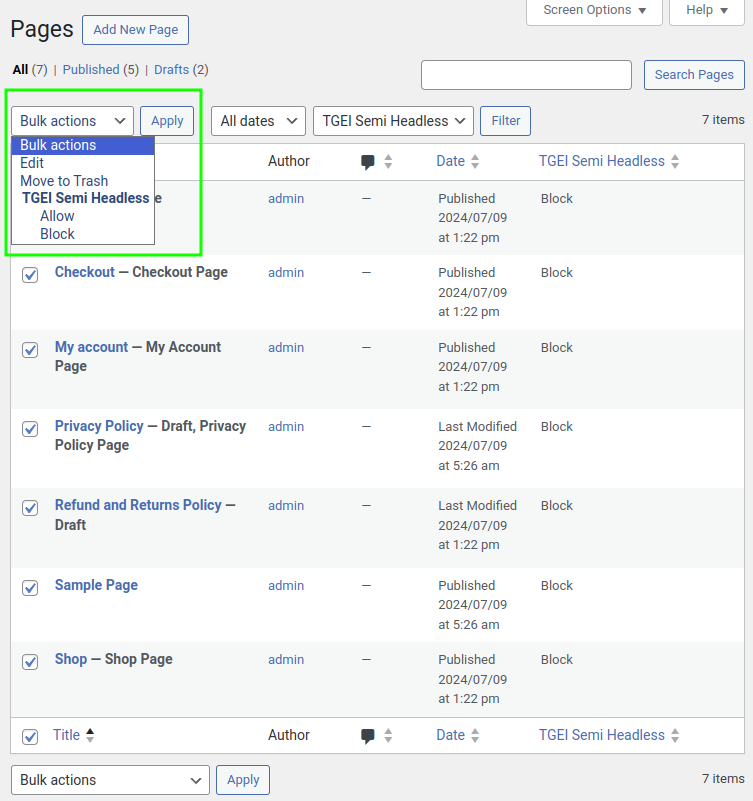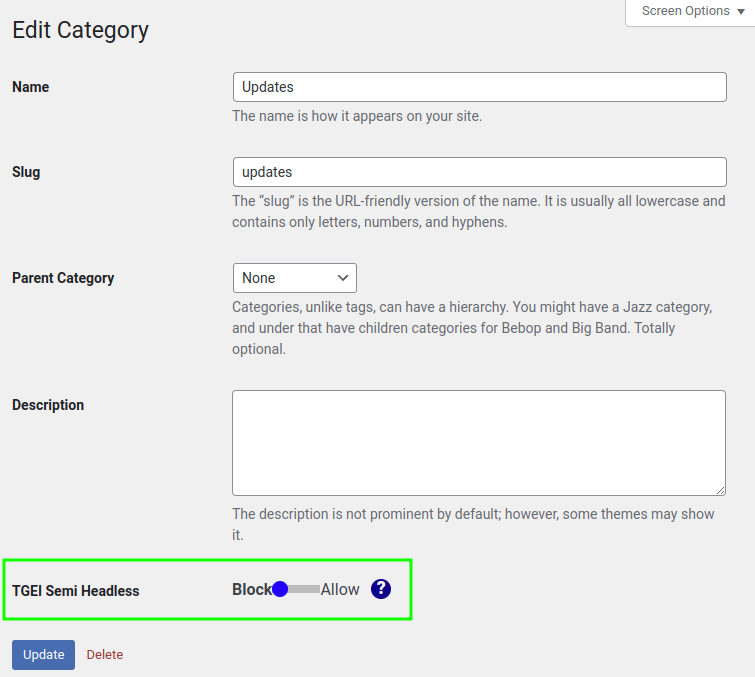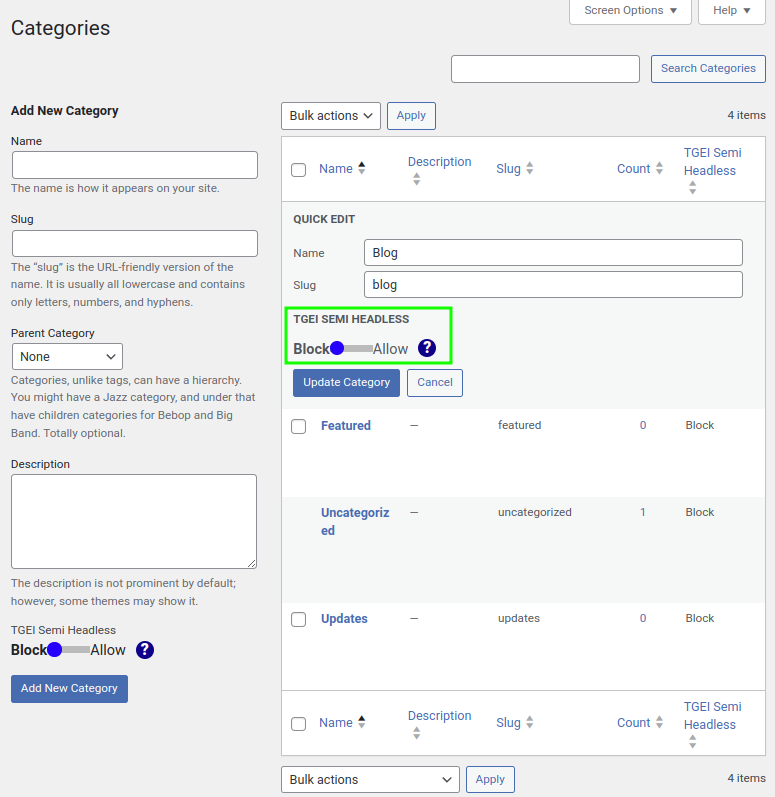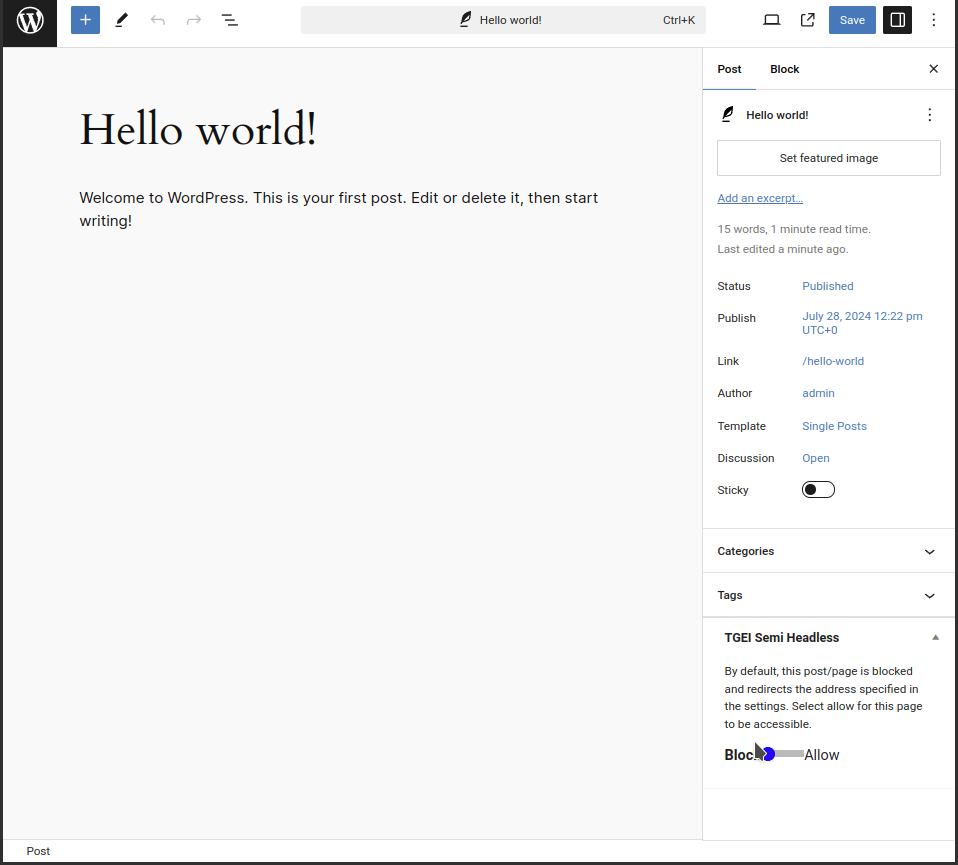TGEI Semi Headless
| 开发者 | toogoodenterprises |
|---|---|
| 更新时间 | 2025年7月14日 11:24 |
| PHP版本: | 7.4 及以上 |
| WordPress版本: | 6.8 |
| 版权: | GPLv2 |
| 版权网址: | 版权信息 |
详情介绍:
A typical Wordpress site is comprised of a frontend and a backend. The front end is what your visitors and is affected by the themes of Wordpress. The back end is what editors and administrators use to edit the content of the website.
A headless Wordpress website disables the front end of wordpress and by redirecting all requests to another frontend that been set up to replace the wordpress frontend.
TGEI Semi Headless provides a hybrid approach which enables the frontend of Wordpress for allowed posts and pages while redirecting blocked posts and pages to the other frontend.
Semi Headless Examples
Online Store
You install an e-commerce plugin to turn your wordpress into an online store. However, you may want to display your products in such a way that it does not fit well with the Wordpress templating engine, so you decide to go headless with your own templating engine. But you don't want to reimplement every feature of the store such as cart management and checkout, so you use TGEI Semi Headless to disable all frontend pages except the cart and checkout pages.
Blog
You have a travel blog where you make frequent posts about your trips. You use an image gallery plugin to manage the various image galleries of your trips. You decide to go headless to speed up your website. However, you don't want to use another image gallery plugin, so you use TGEI Semi Headless to disable all the frontend pages except the image gallery pages.
Features
Control What Is Allowed or Blocked
The following is can be toggled to be allowed or blocked:
* individual posts and pages
* works with custom post types
* archive pages of taxonomies such as categories and tags
* author archive pages
* search result pages
* home page
Multiple Ways to Set Block Status
Toggle the block status via:
* the gutenberg post/page editor
* the quick editor
* the bulk action menu
404 Redirect
Redirect Wordpress 404 errors to your headless site's 404 error page to maintain consistency.
安装:
Automatic Installation
In the Wordpress plugin directory, find "TGEI Semi Headless" and click install. After install is complete, click activate. Go to the plugin settings to set redirect URL and turn on.
Manual Installation
- In the Wordpress plugin directory, find "TGEI Semi Headless" and click download.
- Unzip the downloaded file. It should have a folder named "TGEI-SemiHeadless"
- Upload all contents of the TGEI-SemiHeadless folder to your wordpress site into the plugins folder in wp-content
- Log into the admin area of your wordpress site
- Go to the Installed Plugins page
- Find TGEI Semi Headless and click activate.
- Go to the plugin settings to set redirect URL and turn on.
屏幕截图:
常见问题:
Does TGEI Semi Headless create a headless version of my site?
No, TGEI Semi Headless does not convert your site to a headless version. You will need to create the headless version. TGEI Semi Headless only disables the frontend of Wordpress and redirects all front end requests to the headless version unless that particular post/page is allowed.
What is the default block status for post and pages?
By default, all post and pages are blocked. To unblock, each desired page/post must be set to allow.
I installed TGEI Semi Headless but I can not find the settings page.
You can get to the settings page in two ways: Method 1 From the Wordpress Plugin page where all your installed plugins are listed. There is a link to the settings page from there. Method 2 From the Wordpress Menu: Tools -> TGEI Semi Headless
更新日志:
1.1.0
- redirection can now apply to author archives
- smoother setup process
- fixed redirection bug
- fixed a save status bug
- unblocked ajax requests
- First release version.




